London Colour – Spitalfields’ Glorious Graffiti
Zone 1’s easternmost borough has cleaned itself up a bit in the 21st century, though it once held the dubious distinction of being London’s filthiest and most crime filled district. Today, Spitalfields Market, lying on the west side of Commercial street, is a cosmopolitan treasure trove of handmade jewellery kiosks and international food trucks catering to Hipsters and Millennials making their way in the big city at a fraction of the cost of living in one of the more established and polished boroughs of West London. Across the way from the market is the notorious Ten Bells Pub that was once the preferred watering hole of the victims of one of the area’s most well known former residents, Jack the Ripper. Today, the Ten Bells serves up fancy cocktails to the new trendsetting twenty-somethings of London’s East End, but at the time of the infamous Whitechapel Murders, Spitalfields’ reputation as the worst area of London was at its peak.
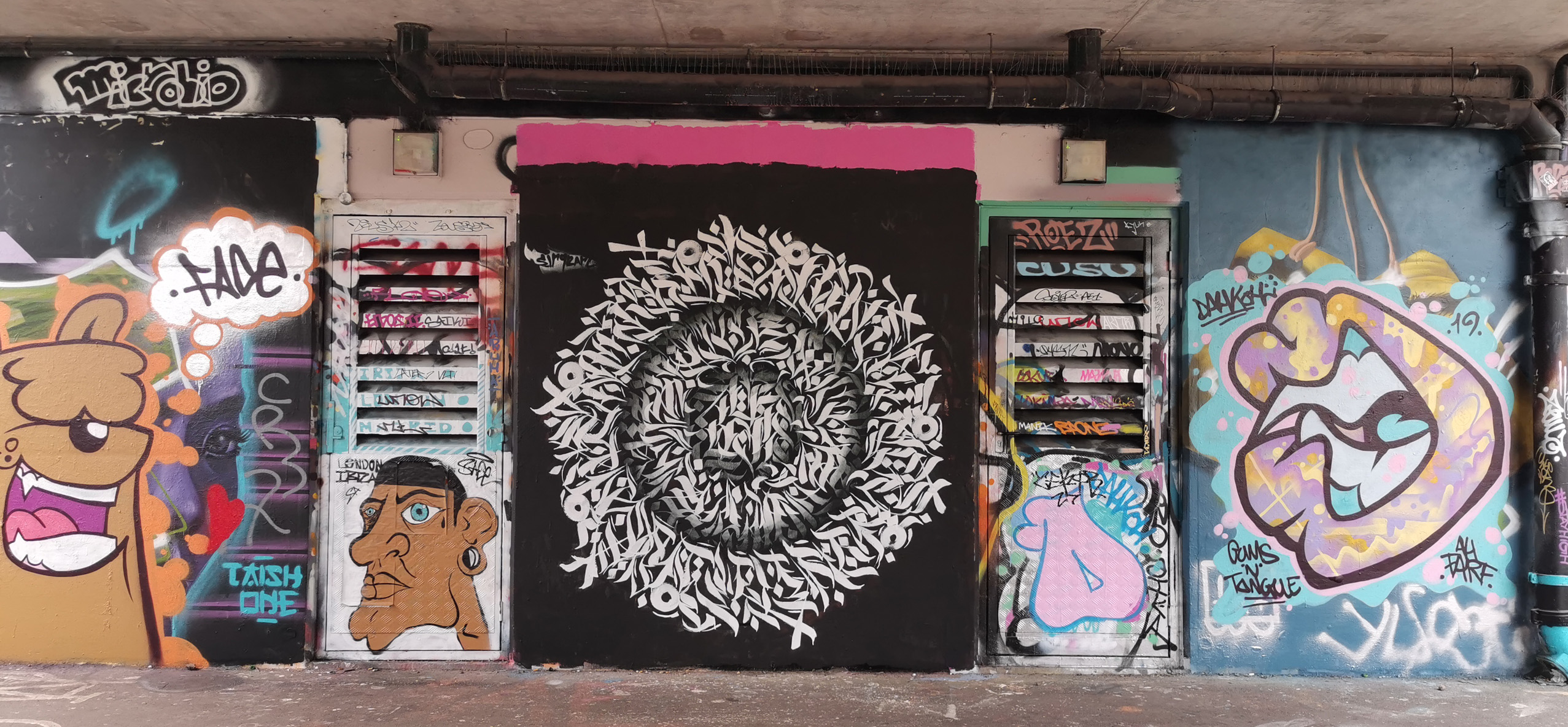
Spitalfields has always been a refuge for immigrants beginning in the 17th century with the Huguenots, fleeing religious persecution in France, who set up their silk weaving industry – a part of Spitalfields’ history which is preserved to this day in the Dennis Severs’ House museum. When the silk industry declined in the early 19th century the area turned into a slum. Jewish refugees from Eastern Europe began to flood the area fleeing their own persecution and seeking employment. In the 20th century the silk industry had a revival with the influx of Bangladeshi immigrants whose presence is still most distinctly felt, making Spitalfields the curry capital of London.

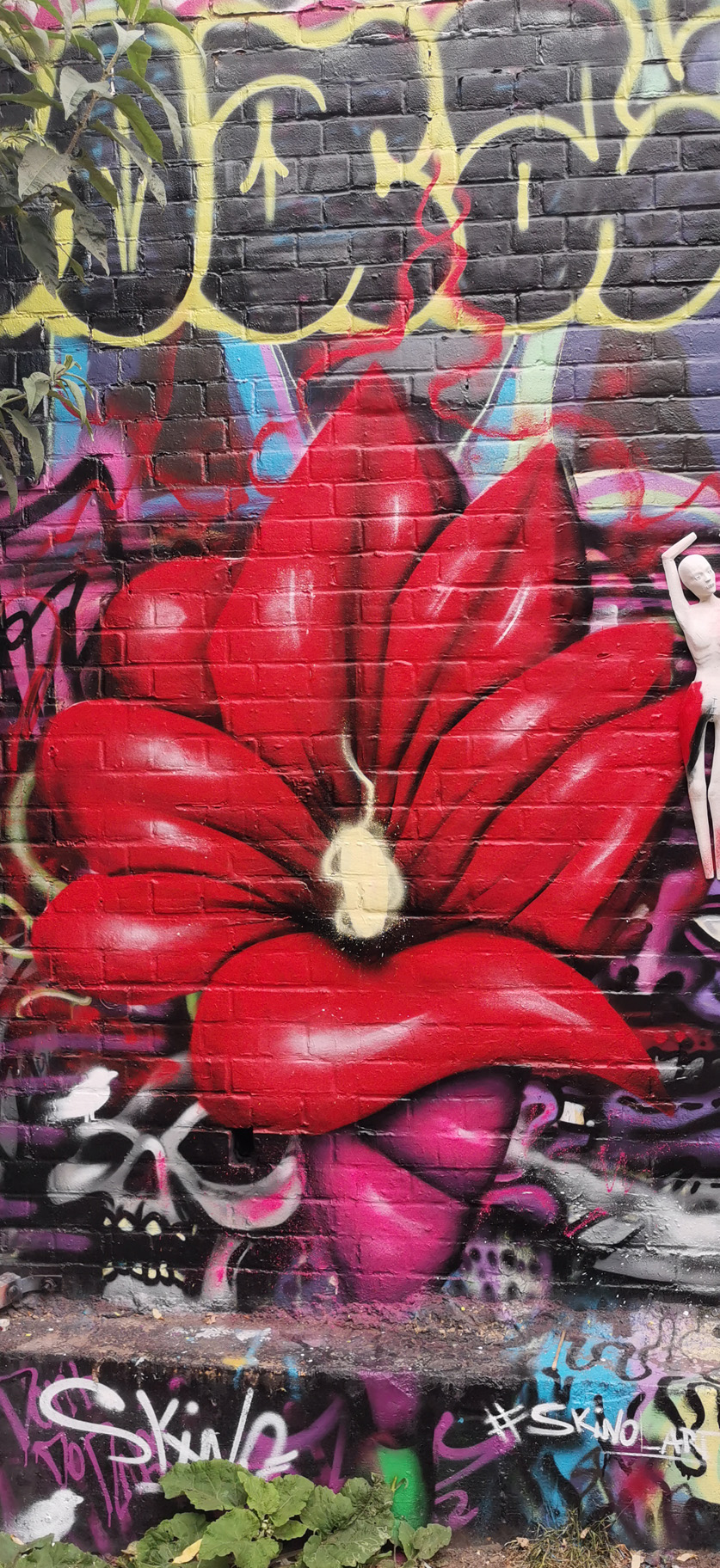

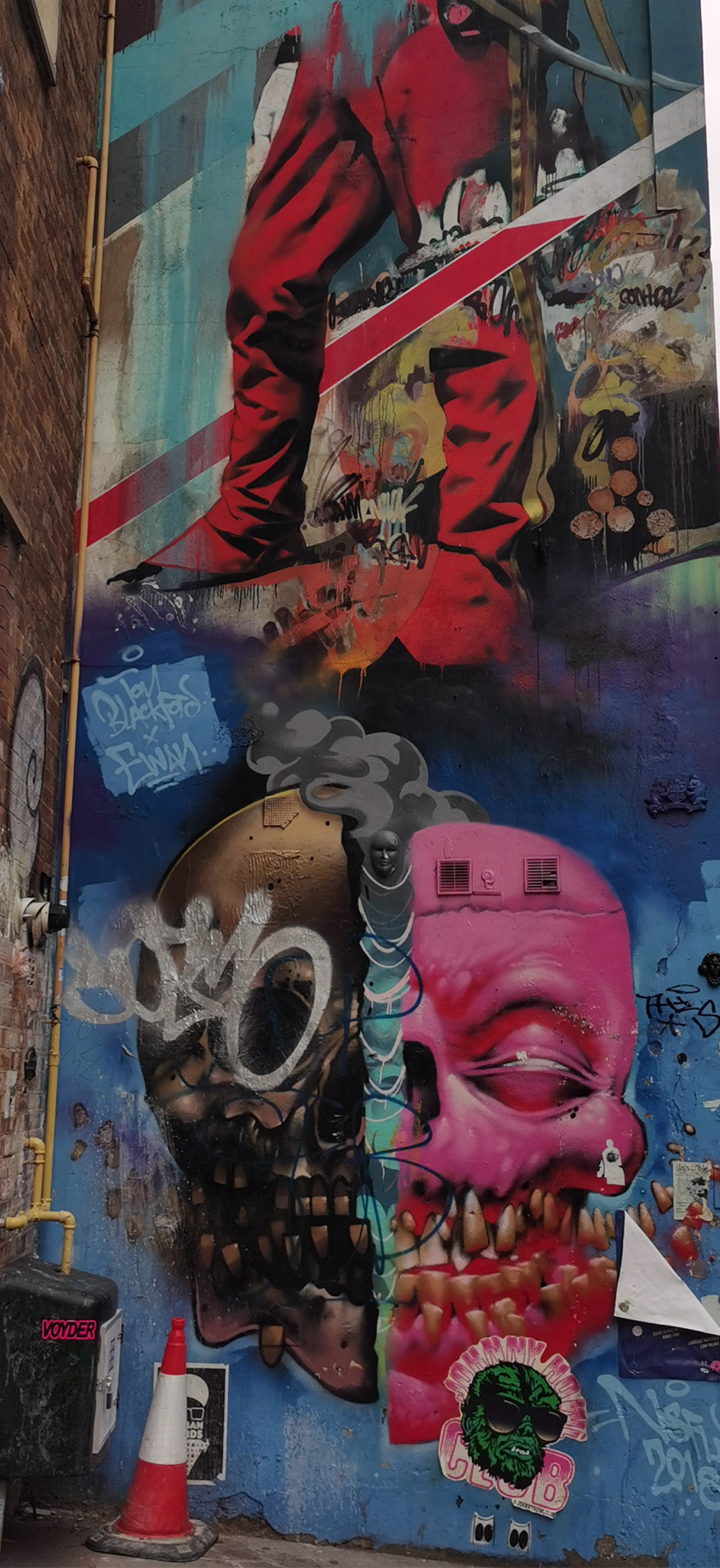

Spitalfields today, like many London boroughs, is an area undergoing a radical transformation as young artists and fashionistas are bringing new ideas and new money to the area. Boutique clothing stores, fair-trade coffee shops, and organic markets are popping up daily and competing with the more established pubs and chip shops of the previous century. It’s sights like the juxtaposition of a trendy communal workspace called Second Home next door to a Bangladeshi-owned Cash and Carry that makes the area feel quintessentially London. But its the small streets that intersect Brick Lane at the very heart of Spitalfields that set it apart.
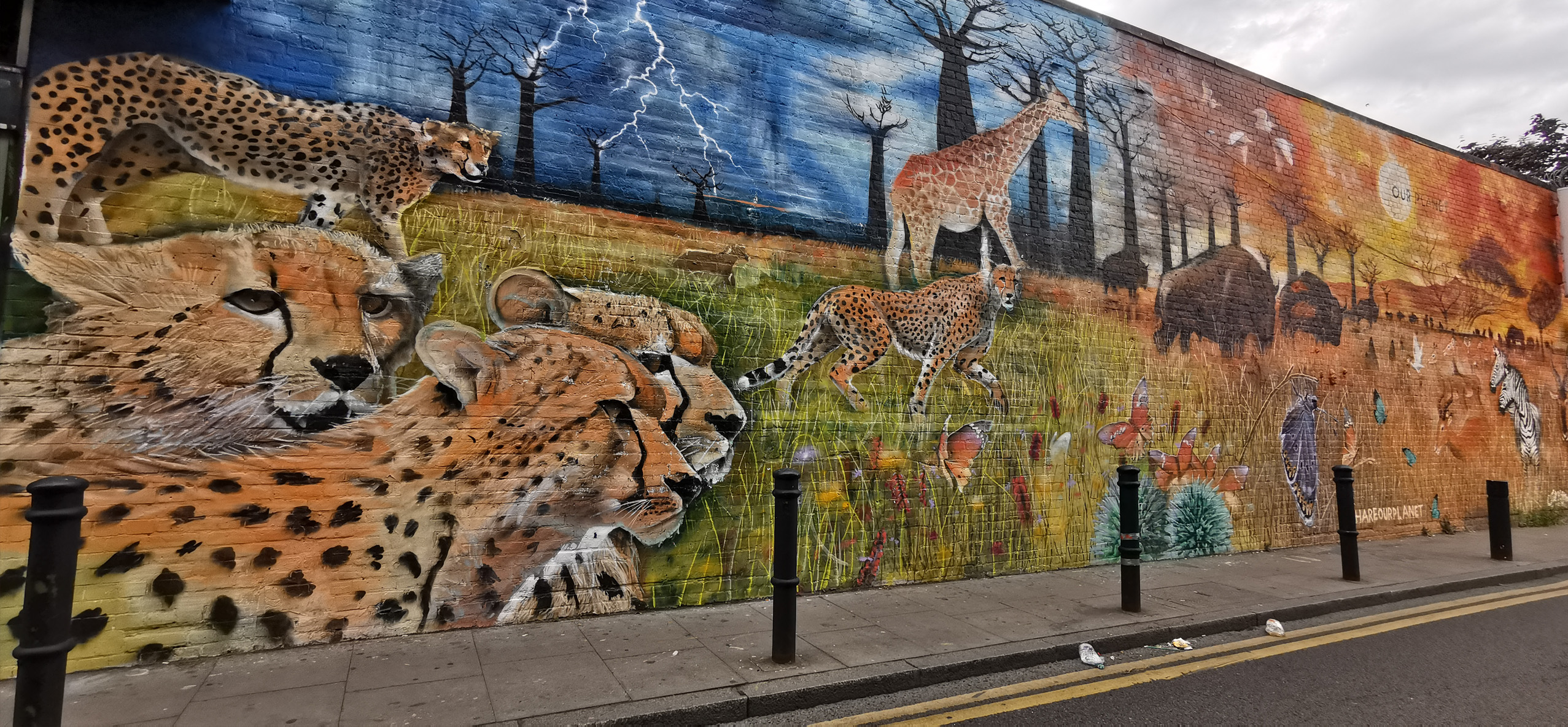
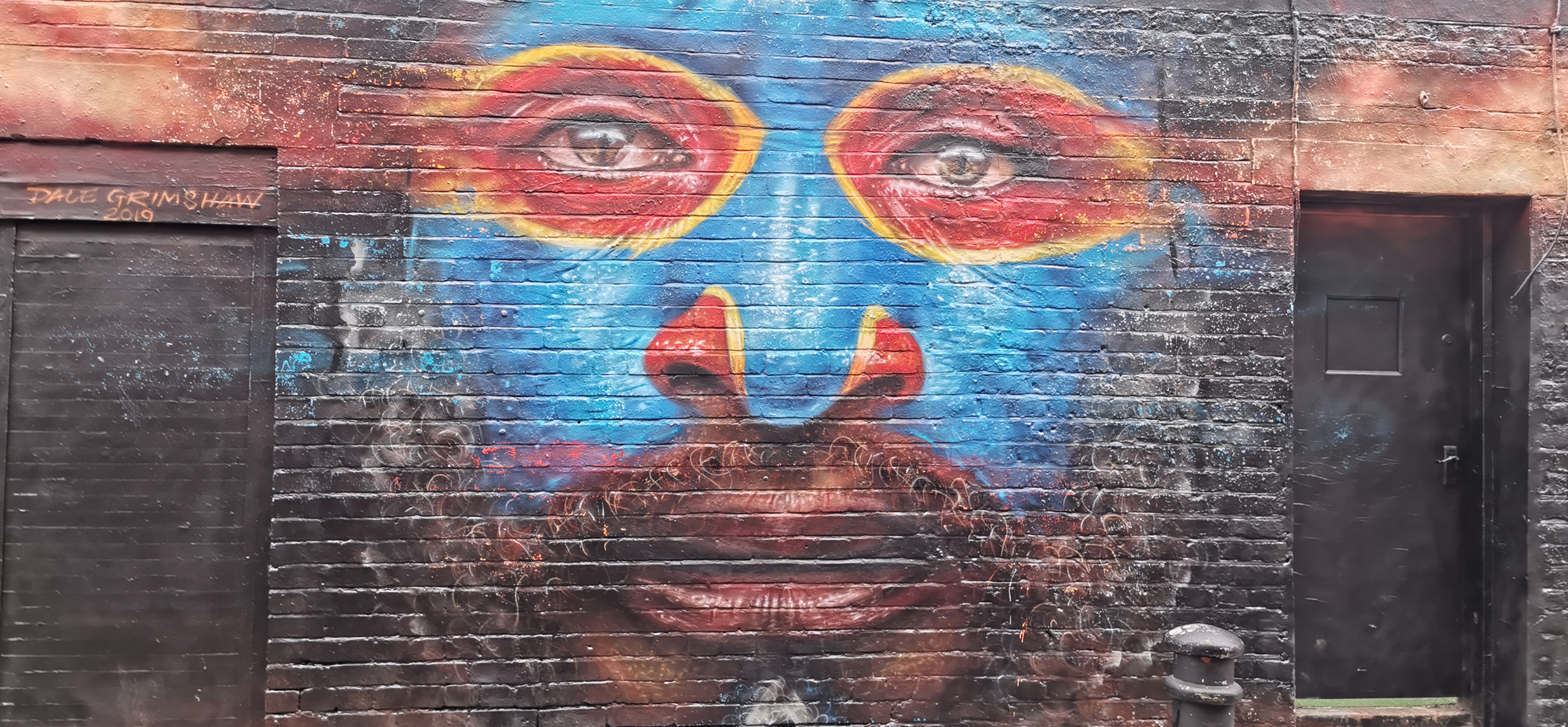
London, with its wide expanses of concrete and grey cloud, can often feel like a grim place, which is why the splash of colour from this dozen or so city blocks really pops. London, has made a profound contribution to the art of graffiti over the years and is even home to Banksy, one of the movements most famous pioneers, and there are undoubtedly other areas of London with magnificent painted murals adorning the buildings, but in terms of sheer concentration it would be difficult for any other zip code to rival Spitalfields – virtually every square inch of every building has been painted upon.
Every last inch of brick and concrete of the streets that straddle Brick Lane are adorned with some type of panorama, tag, or poster collage, so much so that the buildings of Spitalfields represent more a metaphor for city as canvas. One would be hard pressed to describe the spray painted murals of Spitalfields as graceful or elegant, but they do exhibit a refinement that is at once artful and polished whilst preserving the spirit and character of the borough’s gritty and seedy past. Each painting, in its way, represents a microcosm of a 400-year history contained in perhaps our most modern story telling medium – it would be difficult to get more “London” than that.